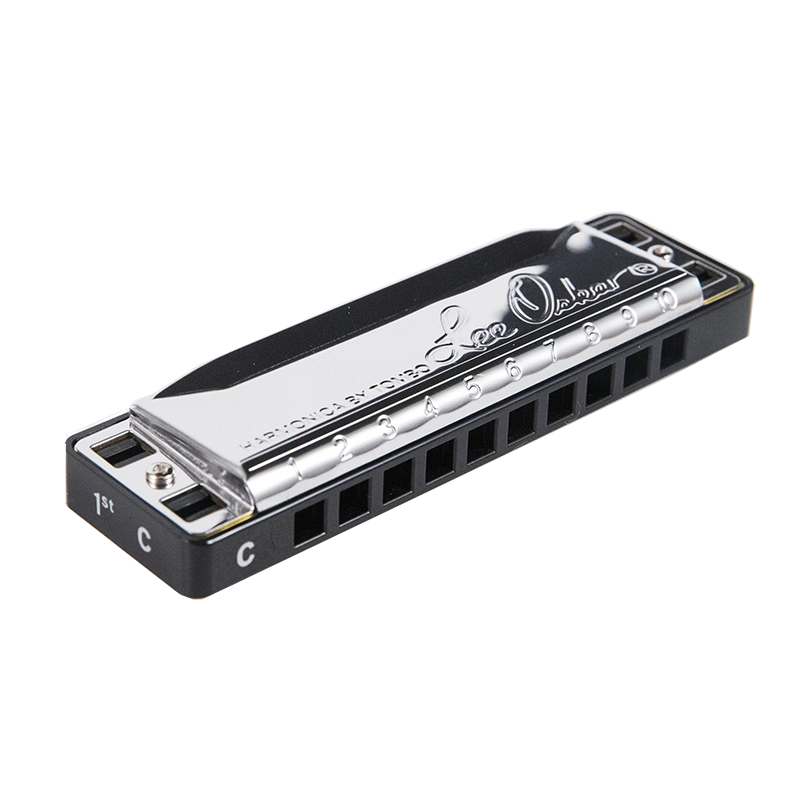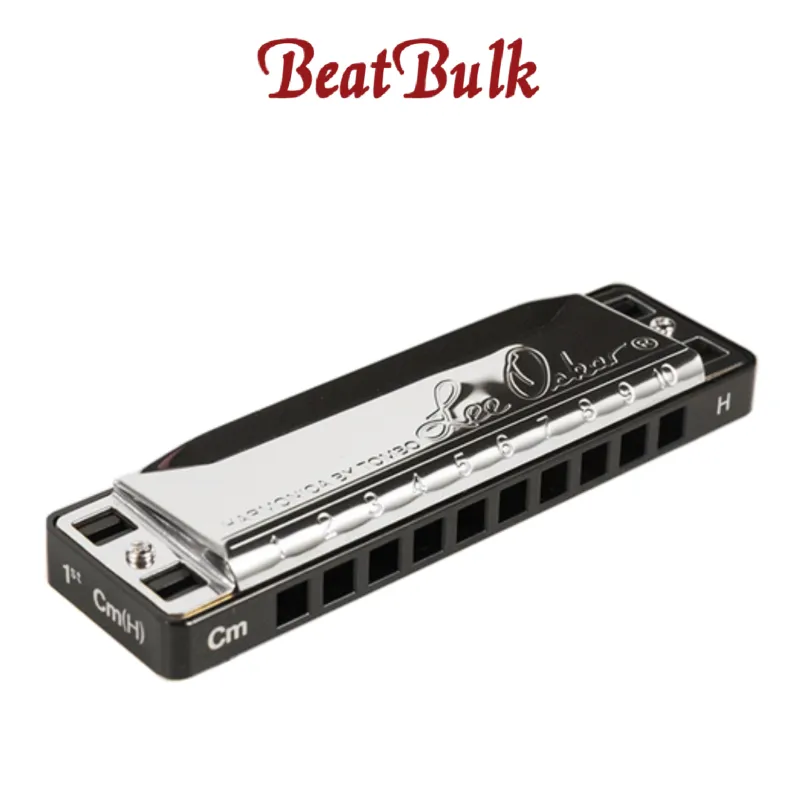Abstrak
The blues harmonica has been the soul of classic and modern music for over a century. From smoky blues clubs to big stage performances, its emotional sound connects musicians and audiences alike. This article helps you find the best blues harmonica for your needs—whether you’re a beginner, part of a band, or managing a music school. We’ll compare models, share expert tips, and guide you through essential buying considerations.
Hal-hal Penting yang Dapat Dipetik
- The best blues harmonica balances tone quality, playability, and durability.
- Beginners should start with a 10-hole diatonic harmonica in the key of C.
- Popular models include Hohner, Suzuki, and Lee Oskar for their consistent tone.
- Proper maintenance extends a harmonica’s life and preserves sound quality.
- Choosing the right harmonica depends on your skill level and music style.
Daftar Isi
- What Makes a Harmonica “Blues”?
- Top 5 Best Blues Harmonicas for 2025
- Comparison Table of Top Models
- Beginner Tips for Playing Blues Harmonica
- How to Choose the Right Harmonica Instrument
- Maintenance and Care Tips
- FAQ About Blues Harmonicas
- Kesimpulan
- Looking for high-quality harmonicas at wholesale prices?
- Referensi
What Makes a Harmonica “Blues”?
A Blues Harmonika is typically a 10-hole diatonic harmonica designed to play the blues scale and produce expressive, soulful tones.
The magic lies in its ability to bend notes—this gives the blues its distinct sound, full of emotion and depth. The harmonica’s reeds, tuning, and airflow system all contribute to its ability to “cry” or “growl,” just like a blues guitar or singer.
Most blues musicians prefer harmonicas tuned to the key of C, A, D, or G, as these keys fit common blues progressions.
Top 5 Best Blues Harmonicas for 2025
Here are the top harmonicas recommended for distributors, schools, and beginners in 2025. Each model has been tested for tone, durability, and playability.
1. Hohner Marine Band 1896
- Ketik: 10-hole diatonic
- Nada: Classic warm, full-bodied sound
- Terbaik untuk: Traditional blues and professional players
- Pros: Iconic tone, great projection
- Cons: Not airtight enough for absolute beginners
2. Lee Oskar Major Diatonic

- Ketik: 10-hole diatonic
- Nada: Bright, consistent tone
- Terbaik untuk: Bands and schools
- Pros: Replaceable reed plates, strong build
- Cons: Slightly higher price
3. Suzuki Bluesmaster
- Ketik: 10-hole diatonic
- Nada: Clean, smooth sound
- Terbaik untuk: Beginners and intermediate players
- Pros: Easy to play, stainless steel cover plates
- Cons: Slightly lighter tone than classic blues
4. Seydel Session Steel
- Ketik: 10-hole diatonic
- Nada: Powerful and bright
- Terbaik untuk: Touring musicians and stage performers
- Pros: Stainless steel reeds for durability
- Cons: More expensive than beginner models
5. Easttop Blues Harmonica
- Ketik: 10-hole diatonic
- Nada: Balanced and flexible
- Terbaik untuk: Beginners and music schools
- Pros: Great value, smooth reed response
- Cons: Slightly less dynamic range
Comparison Table of The Best Blues Harmonika Top Models
| Brand & Model | Jenis | Tone Style | Terbaik untuk | Price Range | Fitur Utama |
|---|---|---|---|---|---|
| Hohner Marine Band 1896 | Diatonic (10-hole) | Warm & classic | Professionals | $$ | Iconic blues sound |
| Lee Oskar Major Diatonic | Diatonic (10-hole) | Bright & clear | Bands / Schools | $$ | Replaceable reeds |
| Suzuki Bluesmaster | Diatonic (10-hole) | Smooth & mellow | Beginners / Intermediates | $ | Easy airflow design |
| Seydel Session Steel | Diatonic (10-hole) | Powerful & bright | Live performers | $$$ | Stainless steel reeds |
| Easttop Blues Harmonica | Diatonic (10-hole) | Balanced | Beginners / Students | $ | High value for budget buyers |
Beginner Tips for Playing Blues Harmonica
If you’re starting your journey with a beginner blues harmonica, don’t worry—the learning curve is smooth if you take it step by step. Here are some essential tips to get started.
1. Choose the Right Key
Start with a harmonica in the key of C. It’s the easiest for beginners because most tutorials and learning materials use this key.
2. Learn to Breathe Properly
Unlike wind instruments, harmonica playing relies on controlled breathing rather than blowing hard.
Practice inhaling and exhaling gently through the instrument to produce clean notes.
3. Master the “Single Note” Technique
Use your lips to isolate one hole at a time. This helps create clear, distinct notes and sets the foundation for bending later.
4. Practice Note Bending
“Bending” is a blues hallmark. It lowers the pitch of a note to create that emotional, wailing sound. Start slowly—bend one note at a time.
5. Listen to the Masters
Study players like Little Walter, Sonny Boy Williamson, and Charlie Musselwhite. Their recordings will help you understand phrasing and tone.
6. Keep It Clean
Moisture and saliva can affect sound. Shake out moisture after each session and store your harmonica in a dry case.
How to Choose the Right Harmonica Instrument
Memilih yang tepat instrumen harmonika depends on your purpose, audience, and skill level. Here’s how to decide:
1. For Beginners and Students
- Mulailah dengan 10-hole diatonic harmonica.
- Key of C is the best option.
- Focus on comfort and easy airflow.
2. For Bands and Performers
- Choose models with replaceable reed plates (like Lee Oskar).
- Stainless steel reeds last longer on stage.
- Consider harmonicas in multiple keys for versatility.
3. For Music Schools and Distributors
- Look for bulk purchase options or educational sets.
- Prioritize durability and hygienic materials.
- Easttop and Suzuki models offer high value at scale.
Maintenance and Care Tips
Proper maintenance ensures your harmonica lasts for years and performs consistently.
1. Regular Cleaning
Use a soft brush or cotton swab to clean holes and cover plates on a weekly basis.
2. Avoid Moisture Damage
After playing, tap the harmonica gently to remove saliva and store it in a ventilated box.
3. Replace Reeds When Needed
If notes start sounding dull or off-key, it’s time to replace the reed plates.
4. Avoid Sharing Instruments
For hygiene reasons, never share your harmonica with others, especially in schools or bands.
FAQ About Blues Harmonicas
Q1. What key is best for a blues harmonica?
The key of C is best for beginners. Advanced players often use A, D, or G for variety.
Q2. Can I play all music styles on a blues harmonica?
Yes. While blues harmonicas are made for blues scales, they can play folk, rock, country, and jazz.
Q3. How long does a harmonica last?
With regular use and care, a good harmonica can last from 6 months to several years, depending on materials and maintenance.
Q4. Is a chromatic harmonica good for blues?
Not usually. Most blues players prefer harmonika diatonis because they allow note bending.
Q5. How do I know when to replace my harmonica?
If reeds sound flat, air leaks increase, or tone quality drops, it’s time for a replacement.
Kesimpulan
Choosing the best blues harmonica depends on your goals.
For beginners, the Suzuki Bluesmaster atau Easttop Blues Harmonica offers excellent comfort and tone.
For professionals, the Hohner Marine Band 1896 remains a timeless choice.
Whether you’re managing a music school, distributing instruments, or performing on stage, investing in the right harmonica ensures quality sound and long-lasting performance.
Looking for high-quality harmonicas at wholesale prices?
Jelajahi BeatBulk’s full range of blues harmonicas for bulk orders, music schools, and performance needs.
Get expert support, factory pricing, and fast global delivery — because every note matters.

Referensi
- Hohner Official Website: “Marine Band Series Overview.”
- Suzuki Musical Instruments Co., Ltd. Product Catalog.
- Lee Oskar Harmonicas: Product Specifications.
- Seydel Harmonicas: Stainless Steel Reed Technology.
- Blues Harmonica.net — Educational Resources for Beginners.







